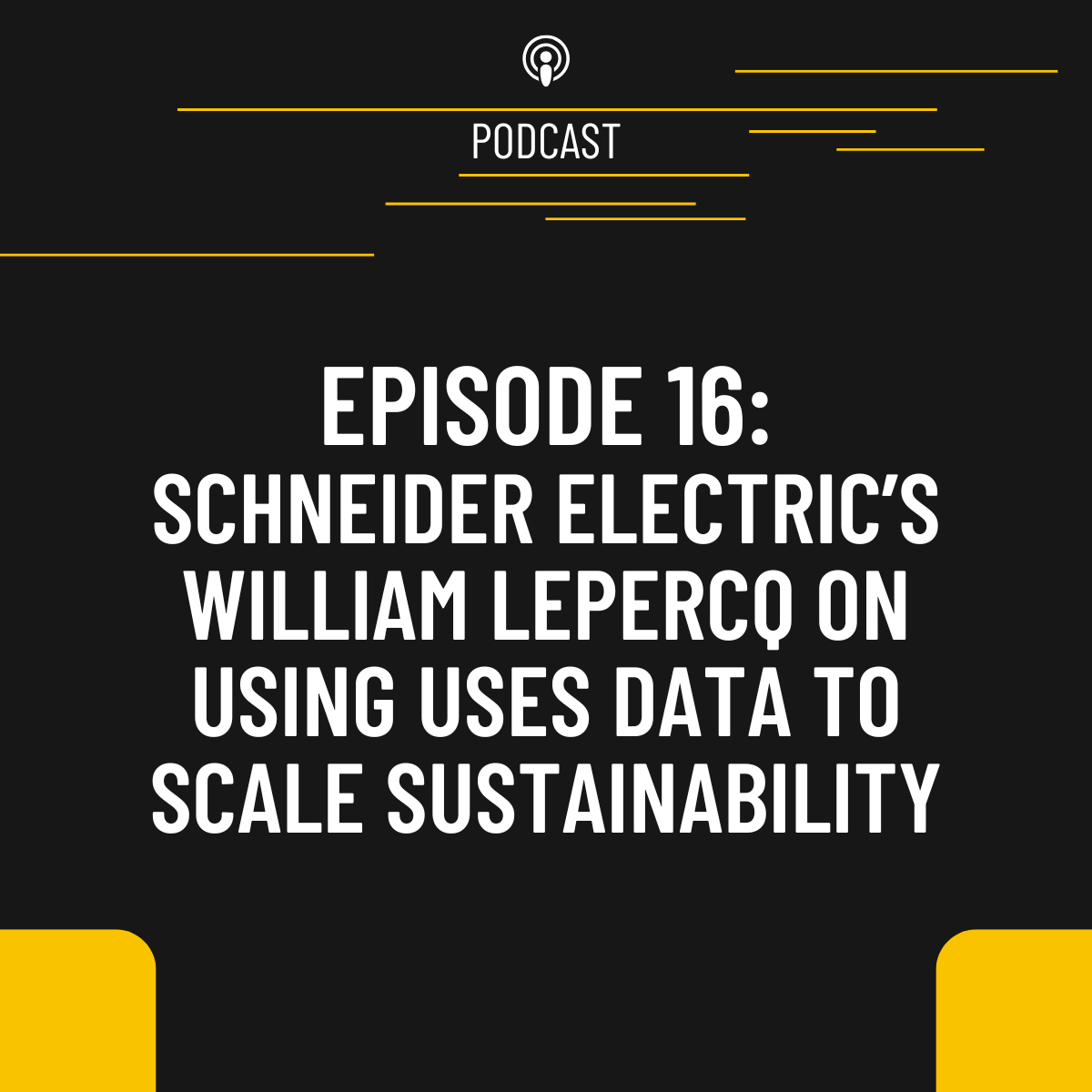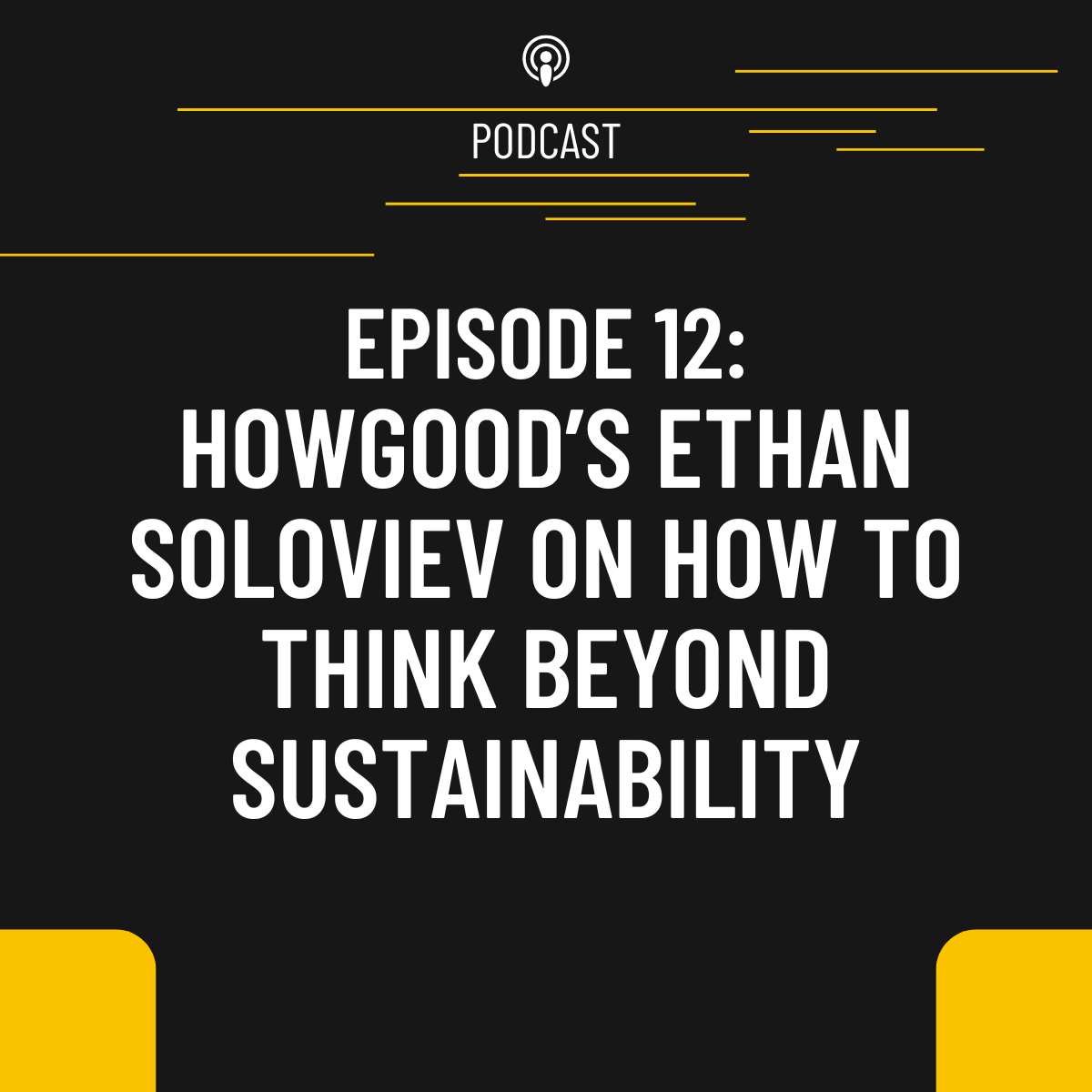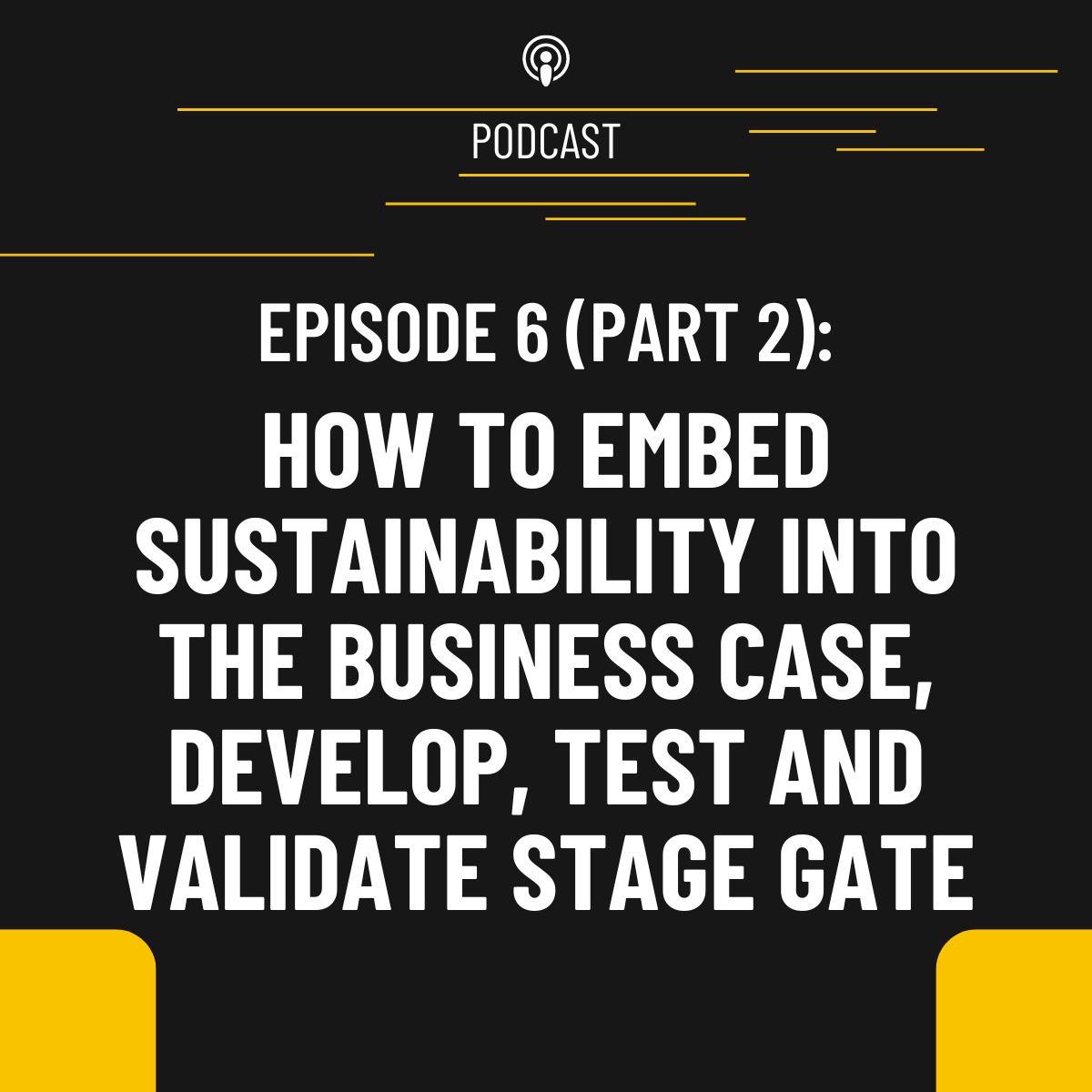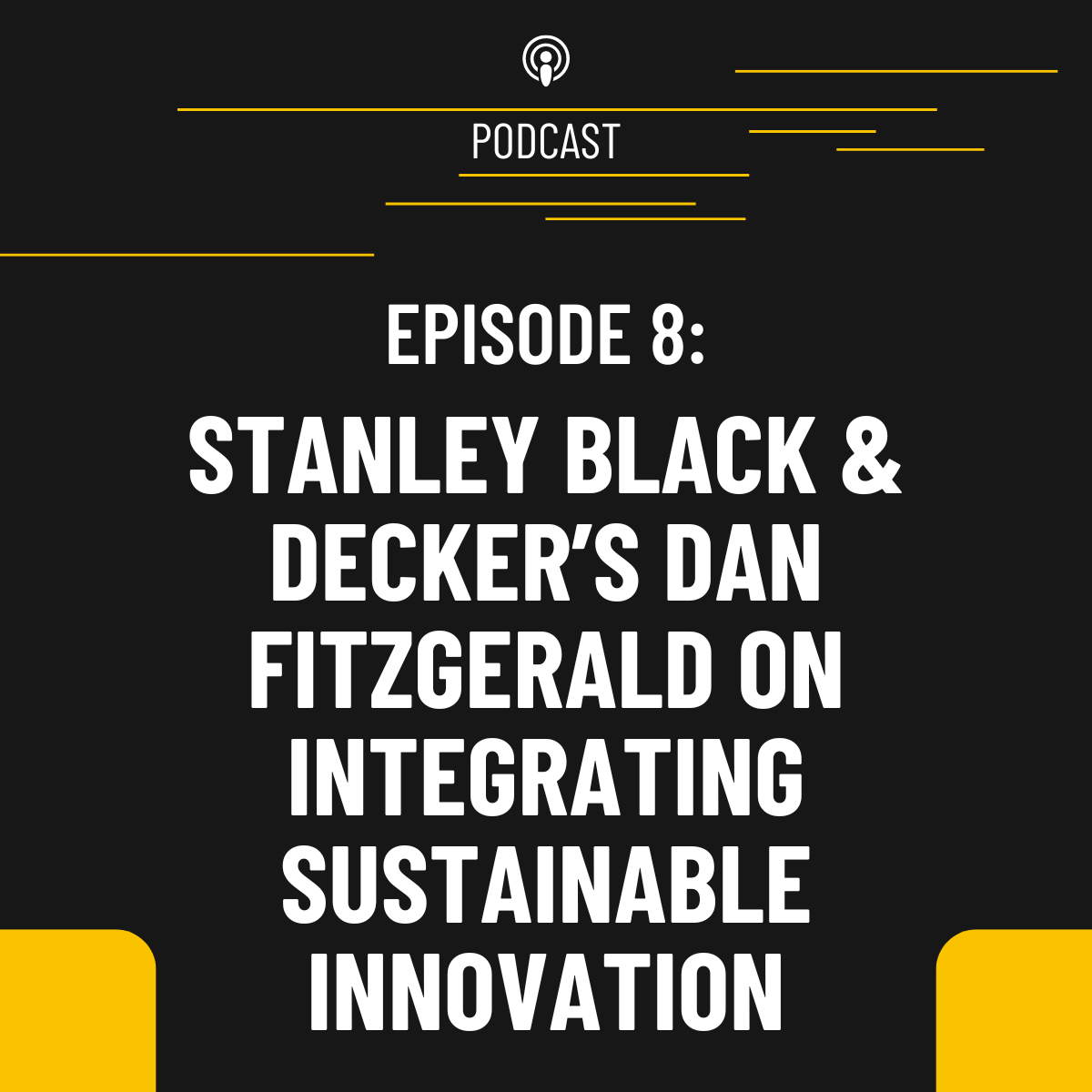Episode Transcript
Shelley: You work at Schneider Electric, which can be considered the global leader in sustainability. It was ranked first in corporate sustainability by Corporate Knights out of 100 companies in 2021 and again ranked first in 2025. And in fact, it might be the only company that has done this. Clearly are making something work here. Why have you guys chosen to focus on sustainability as a business value? And what are some of the ways that you're doing this to make it successful? [00:34]
William: That's a very good question. Actually, I was not even in the company when this was decided by the former CEO, but he took the bold decision to link sustainability and business to make it a strong attribute of Schneider Electric culture and Schneider Electric company. It was, I think more than 15 years ago and what I can see today with my experience in Schneider is that it's a mix of purpose first to make the most of energy and resources, a mix of the sector we operate, you know, electrification, energy management, industrial automation, and a mix of spreading it everywhere in the company. Any people in the company is deeply convinced about this purpose and how Schneider Electric can make a difference in the field of sustainability. And also we are a large manufacturer. So, Schneider is a product company and we'll discuss it a bit later on. But that's embedding sustainability in the products we design, in the way we sell them, in the value we bring to customers. Also, I mean, has effects on the investors we attract to the company. And so that creates a systemic effect that positions us very well in being ranked several times in a row the top sustainable company in the world. And then behind the scene you have a strong reporting system, a data oriented company that makes sustainability data flow everywhere in the company in a seamless manner that will constantly improve. That's also one angle of the discussion we'll follow. But that's what I can say. [01:02]
Neil: It's reflected well in the value of the company as well. It's grown about 10x in the last 20 years, which for a massive company - that's incredible. So very often in the past there used to be a conjecture which is, are companies that are successful sustainable because they're successful or are they successful because they're sustainable? And I think you have to take long term trends and if you say, you know, this started 15 years ago and this conviction is kind of panned out, where you've seen consistent growth in the business and in the value of the business over time. When you joined Schneider, when was that? [02:38]
William: Three and a half years ago. [03:17]
Neil: There was a big task ahead. Maybe you could give us a bit of scenery of what things look like and what did you think you needed to do? This would be great. [03:20]
William: On what angle you mean? [03:33]
Neil: You're responsible for environmental data and this is, as far as I understand, this is about product sustainability, right? About the products. Exactly what were you tasked with doing? What was the problem that you joined Schneider to solve? [03:35]
William: Very good question. So, I always work on purpose. If I'm convinced of the purpose, I go there. And before joining Schneider, I was working in the sustainability consulting at EY and that was 2021, 2020 even. And I saw many companies committing on decarbonization, quantitatively reducing their carbon footprint. And I'm a former product designer, hardware products. I'm also a former eco design LCA consultant, product sustainability consultant. So I knew that if a company wants to reduce by, I don't know what, 50% its carbon footprint at the beginning, the company has to measure a baseline and then has to measure the progress. And so the company needs to quantify regularly what's the carbon footprint. Most of the companies, the carbon footprint is driven by either what they buy, manufacture or sell. So, it's most of the time about products. And then I knew how it can be difficult and long or time consuming or, you know, money consuming to calculate properly and regularly a carbon footprint or an environmental footprint of a product. And as I knew this topic, it's the same time that I saw this again - Schneider as a sustainability company, they invested in scaling LCAs. They wanted to scale LCAs to provide it to the market, to their customers and also to inject it into the design processes. And so I knew there was something to do there, you know, so I wanted to come to Schneider to take this new challenge. And at that time, if I look back in the mirror, it was how are we going to scale LCA environmental footprint calculation on a so large product portfolio. If you talk only about hardware. It's more than 200,000 product SKUs that Schneider designs/sells. And so it's a large stuff, you know, and historically, you know, historically the way LCAs were done, it's not at all scalable the same way on such a big portfolio. And then the goal is not to scale LCA, the goal is to scale LCA to differentiate again on the market, to put it in the design process, to provide these data, to make this data flow on the market. For example, for, I don't know, a building design firm that will select our products to design the new building. The new building has to be decarbonized. The new building needs the data from the products that are inside this building and that's also contributing to this. So it's a kind of transformation. Being said simply, I've always been driven about having a positive environmental impact on the way we consume, the way we live. So that's the contribution to this. The world of sustainability is turning to a data driven world, you know, so that's, that's really what's happening since, I mean you might have felt it before because you, founded Makersite before, but I see it on my side since just after the COVID you know, the market is being excited about getting those sustainability data, you know, sustainability metrics. [03:45]
Neil: You, you mentioned something interesting. Typically when we look at sustainability, the vast majority of companies look at this as license to operate. I need to do this, otherwise I can't sell to my customer, which is huge value. If I'm not sustainable, I can't sell. There was a study that came out by PwC earlier this year where they said there's price premiums that you can pay for sustainable products. This ranges between 6 and 25% for different kinds of products. There is a license to operate which is a very significant driver. But I think what you said was differentiation, which is a very different thing than license to operate. You're not just saying here's my ticket to enter the cinema. I'm actually saying my product is better than anyone else's. And that requires eco design, which is not just an LCA, but using this as a kind of a guide. How do you see this? [07:14]
William: Yep. I would explain it through the one of the problems we are trying to solve with the project that we are running on LCA at scale. Starting from the license to operate that you mentioned, if we take the angle, so we go fast into the topic, but if we take the angle of LCA environmental product declarations for those who know EPDs, that was, it's still our license to operate in our market. Manufacturers of electrical products for the industry or the building market or whatever, it's a license to operate. We have to provide an EPD to the market on our products. But we used to do it on a limited list of products, representative of our product families. And when an engineer wants to inject eco design in the product design process, if you provide this engineer an LCA on another product of the product family he's designing, he wants to focus on another one, he will tell you none of it. Okay, I understand, but I need to know what are the hotspots in this exact product that I'm designing, and I need to be able to do some fast simulations. I would not want to go to Neil, for example, who is from my sustainability team, you know, sustainability expert and request from Neil, Neil, if I change the recycled content in my product, does it bring a CO2 benefit or not? What's the impact on the cost of the product? And so Neil will tell me, okay, William, I need one day or two days. Oh no, sorry, I'm very busy at that time. I will reply to you next week. But the design decision, I want to take it now because I have many design decisions to take and I need to talk to the purchasing, industrialization, blah blah, blah, all the design team that we call Squad in Schneider. And so I need a reply now. So what we are trying to solve, bringing this LCA simulation capability like in seconds into the design teams so that they can use it as a compass, you know, at the beginning they look at the LCA of the product they are redesigning or an equivalent product in the portfolio. You know, because we don't invent totally new products every day. At Schneider, we redesign many products to make them compliant to the regulations, locally, etc. [08:04]
Neil: And these are also long-lasting products, right? [10:31]
William: Yes. So yes, it's I would say minimum 10 years and it can go up to 40 years. We have some transformers that are still operation. [10:33]
Neil: So if you make a bad choice now, you live with it for the next ten years. [10:42]
William: Yes, it's a big responsibility. And also the development lead time is quite long. It can be up to 2, 3 years depending on the product complexity. So by the time you take a decision, you need to be foreseeing what the market will need in two, three years. Because if you do a bad choice, you won't be able to sell it in three years, when you launch it. So yes, but in many industries it's like this. If you take a decision now in August and the design is still not finished in December, you need to reconsider this decision. And if it takes days to reconsider one decision and it gets too complex. [10:46]
Neil: Especially because it's not one design parameter you're looking at. Right. You're looking at multiple design parameters. [11:34]
William: Yeah. That's a complexity and that's always what we face in Schneider. It's the complexity we face when it comes to deploying what we do on LCA at scale and to support eco design in the design community. The design community in Schneider, it's more than 10,000 people for technical design, purchasing, industrialization, all the skills you need in the product design team. And so the technical engineers, the ones who do the mechanical or electromechanical or electronic design, they have many things to cope with, and they have software for finite elements in mechanical design. They have software for thermal simulation, they have software for electronic simulation, many software that they need to play with. So it means that they need to take many different decisions. So we add on top an environmentally driven decision, it has to be at least as seamless as the other software they use, because if not, they won't have time to do it. And they are not eco design nerds as I can be. It's not their field of expertise, not their everyday job. [11:39]
Neil: Its almost like another number. I used to say this many, many years ago, that when you want to operationalize sustainability, you have to make it just another number. And people used to be like, oh my God, it's not. But the thing is, if you're an engineer, it needs to be a number. Otherwise, I can't compare it to another one. [12:50]
William: It's very interesting this point, because when we talk about eco design or things designers can act on, they can act on the product weight, for example, physical things, they can act on the intensity in terms of electronic components, they can act on the recycled content, on the recyclability, on the repairability of their products. Okay, that's good things to do. If you make a product more repairable, we know it should be good if you inject more recycled content. Normally it should be good if you reduce the weight. But sometimes you have tricky decisions to take, like if I go for this new technology of electronic components, it's smaller, it's lighter, but then the manufacturing process might be heavier in terms of carbon footprint. First you need to know that it's a risk and then how do you take the decision? As a designer, you need a compass that you check regularly. It's how I see the interaction between LCA and physical parameters on which the engineers can act on. It's like the image I gave you one day. The engineers are driving a boat, they look at the compass, they see they are going the right way, but they need to change the design. They steer a bit on the left, but then there is wind and all that. Are they still going in the right direction? They have to check the compass. And so that's this back and forth. Or even when you're driving your car, you check that you're still on the road, you know, you need to check. So it's interaction between LCA, the compass direction and the things you can act on the steering wheel. [13:10]
Neil: But this is fundamentally different from how LCAs were typically used in the past. [14:53]
William: Yes, because they were cumbersome to do. [14:57]
Neil: So what are you doing differently? It's almost like what happened in the CAD world. So when people started moving from physical products as models for what, what prototypes they wanted to build, they moved into CAD and they needed all of these different data points, right? Stress and Young's modulus and temperature curves and so on, to understand simulations of how these products would behave. And this gave rise to simulation after that. Right, but in between CAD and simulation was a lot of data. And this infrastructure of data that you needed, it's almost like the same thing that you guys need to have to be able to do this. [15:00]
William: Yeah, the analogy is very good. This project that we are running is a mix and there's no topic that is more important than the other one. But it's three ones. It's the software or the tooling, of course. But perfect software would be nothing if the data architecture, the data flows are not properly set up and managed and would be nothing if the change management is not properly addressed. We can have a perfect software running super well because you have super data. But if we don't train the people and explain to them; there are lots of things on change management we could elaborate on. But I had to promote it Internally to invest on change management in this project. Other projects already shown that if you invest properly in change management, it's a success. Then I was expecting that it would bring value. And I still have some surprises today. Like actions we take on change management, it's enormous the benefit. Okay, so let's park this, change management, you can really discuss it. But on the topic that you pointed data, I remember when I did LCA the traditional way, 80% of the time spent on an LCA was data collection. You know, data gathering, data treatment, database. You know it, Neil, you've practised it also. But this 80% of the time, at least that we need to super rocket fast track. If we want to have it instantly, we need to fast track the data collection, the data treatment and its data integration. So connection of this LCA system to data sources in the company and also cleaning the data sources so that the data can flow easily. So I will illustrate. A bill of material of a product at Schneider, for example, I studied the example of one of our very small variable speed drives. It's 500 lines in the bill of material. [15:36]
Neil: What is a. I mean, for our audience, what is a variable speed drive? Just so that they don't. [17:46]
William: Yeah, sorry, getting too familiar to Schneider. A variable speed drive is a device that is able to steer the frequency of the signal and the quantity of energy a device receives. For example, you have a motor in an HVAC system. You need to make this motor turn at a certain speed. The variable speed drive is here to adapt the energy supply exactly to the speed you need this motor to rotate. And if you need to speed it up, the variable speed drive will act. You know the sound you hear in the trains, electrical trains when they start? That's a variable speed drive behind this. [17:50]
Neil: So not to distract you, continue please. [18:32]
William: This product is a small one, like 2.5 kilos variable speed drive to the big one. You can have ones that weigh several hundreds of kilos. And the bill of material is already 500 lines. So 500 components, parts, et cetera in this product. And just imagine you need to fill in this data manually. Okay, this part is made of die cast aluminium and weighs 1.3 kilos. This part is an electronic component. This PCB product printed circuit board has 100 electronic components on it. So it's not possible to do it manually if you want to accelerate. So that's the landscape we have at Schneider and that's why this data oriented company aspect is very beneficial because we have one source for our bills of material and then if we focus our efforts on cleaning this one source because of the size of the portfolio and we connect properly the LCA software to this, knowing that the LCA software needs this and this and this and this data point, you know, it's building the data model, flow the data to the LCA software, then teach the LCA software, train it to digest this Schneider bill of material, then the thing is done and it happens and LCA comes out. And if an engineer will not change the LCA software but will change a bill of material in this data source, the connection reflects it immediately and the LCA gets updated. So that's the target we have. [18:34]
Neil: William, you mentioned, and we don't have to talk about change management, but actually I'm very, very interested in talking about that simply because we've had many guests on the show and on this podcast and more often than not we find their approach to implementing sustainability is very tactical. So they'll find teams where there is a need and then there is a kind of, I think one of them called it the team A. The A team who would run go and try to help that engineering team to solve a problem. But when you think of change management, this is more systemic. Explain to us why you chose this approach of systemic change versus more tactical change. And are there any benefits or drawbacks from your experience today? [20:13]
William: Yeah, systemic change to me takes more effort and time to build, but when it's well rooted, it's more resilient. So that's the approach we took because also from my experience, the market expectations in terms of sustainability can change a lot. I mean, I've been working in this field since 2008 and I've seen some back and forth or you know, market focus going here there on sustainability. I think it's coming to a more stable state now. But we never know, and so that's why the unit, it's very context specific. Also because of the purpose of Schneider Electric, because of its mission, because of the importance of sustainability in Schneider selling its solutions, the thing is already well rooted. And now as we are also a leader, we need to avoid at the maximum greenwashing. We need to demonstrate the benefits our products have in terms of their own manufacturing or their use. So that's the business needs we studied very carefully and that's how I joined Schneider actually, because these business needs started to get identified and we felt there was a momentum here. So this was well rooted in our business case. Also, Schneider has been working on eco design first culture deployment, scorecards deployment, you know, for engineers since several years, 2015, the minimum. And so now that this sustainability world comes to a data-oriented world, as you said, we need numbers so that designers can take decisions. So you know, what are the market expectations? They require data to take good decisions, to report on their own scope 3 accounting. Then internally we need to change our products and we've passed the acculturation, you know, bringing this eco design culture in the teams. Now we need numbers, we need to take decisions, we need to make it completely in products. And the last point is link to regulation. You know, the CSRD recommends several times to use lifecycle management life cycle assessment to assess materiality. And the last point is I've always promoted our LCA at scale project as, please excuse the word but as a mess, a data mess cleaner. LCA is consuming so many different types of data that it will impose to clean the data sources and then this will benefit to other sustainability reporting. For example CSRD, you need to report on the recycled content of your products. But this is also useful data for LCA, for eco design, etc. So if you need to operate an LCA system with proper data flows automated, then you need to clean this recycled content data and it's the same for many other data points. So that's why I say LCA is a mess cleaner. So this was the business case. In other words, ability to remain a leader in terms of answering to or responding to the market requirements, complying with regulations, cleaning our data and process efficiency. This EPD license to operate, this is something we need to maintain at Schneider. And the market is now requesting not an EPD for product family, but an EPD for each product. And there you need to do some process efficiency. [20:59]
Neil: Yes. And as we move into the world of digital product passports, I think this is going to come even it's going to spread. [24:57]
William: So that's the part of systemically convincing the company. Then we have another systemic aspect which is how we deploy this project, how we make the change. We have an LCA tool today. We are switching to this new era of LCA at scale. People will use those numbers in eco design. That's not already the case at scale. So that's a big change. [25:03]
Neil: You've been at this now for almost four years. There's lots of things that you've learned, things that actually you'd like to recommend to people that they should do and things that they shouldn't and also what they should start with. What to do on Monday? How about you leave us with that? [25:36]
William: Yep. Can I include some different bullet points in my answer? [25:57]
Neil: Absolutely. [26:02]
William: The first point is to spend time on the business case and iterate a lot like crash test the business case. You go to some leaders that you know or it's a bit of political navigation in the company. You identify who are the forces in place, who will be your promoters and you crash test the business case progressively boom. So that you get to a strong business case. And then if there's a need, this business case will show that there's a need of investment to gain process efficiency, et cetera, and market value. Not every aspect can be quantified, but it's not a problem. The second thing is, it's a bit conceptual, but think as systemic as you can. It's not only a matter of tool. If you focus on the tool, people might tell you in the company, but you're obsessed by tool. But tools are not magic. And so think about, as I said now, tool, data and change management. And this was recommended by several people in the company and it showed benefits. And be patient, but be fast, progressively like step by step. But don't fix a three years timeline without intermediary results. We've done a pilot phase of six months. It was a real hackathon, like many resources in it. Go fast to demonstrate a first value, even if this value is small compared to the ambition. But then it shows it works. And then, okay, what's the next step and next step and next step and next step. So that's how we, in a few words, we deploy and we consider as important the tool, the data and the change management. Because at the end or at the beginning, data is coming from people or is used by people and the value is coming out of this. So if you don't consider the people aspect, I guess it will not work. [26:07]
Neil: Absolutely. And what would you tell someone? So imagine a product manager that is super enthusiastic about initiating this in this company or scaling these activities in a company, but isn't making progress. What would you tell that person to do on Monday morning? [28:00]
William: Root it in the purpose of the company. Study carefully the context of the company and link it to business value. You need to find a way. But that's what we did. It took us some time, but link it to business value. It's the best way to get some success. And also look at regulation, you know, link it to regulation; that brings not only the differentiation but the license to operate. We need both. Does it answer your question, Neil? We can rephrase. If not, we could discuss hours on it. Three years on this project is full of lessons. But if I look back in the mirror, don't remain isolated. Spend time on convincing enough leaders in the company so that they can support. And if someone is pulling out because the organisation is changing. Also you still have some promoters and if some are not convinced at the beginning, just take three, four months, six months maximum and demonstrate that it works. And then they will be convinced. So patience also. [28:16]
Shelley: Thanks, William. So many good insights of the progress and jumps you've made, at Schneider, in terms of building the business value into sustainability and highlighting even the people aspect. Can't forget that part, even if we know the way. [29:30]







